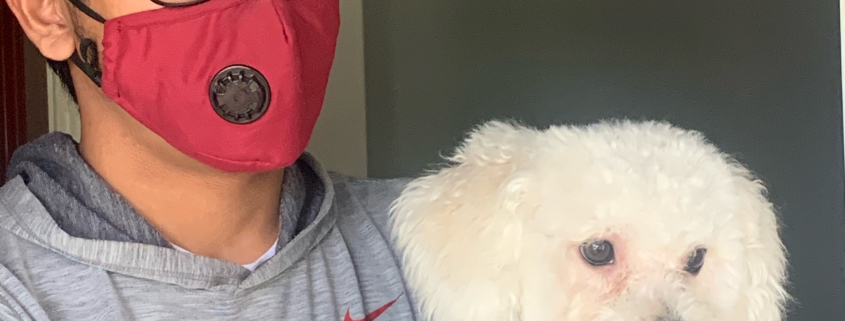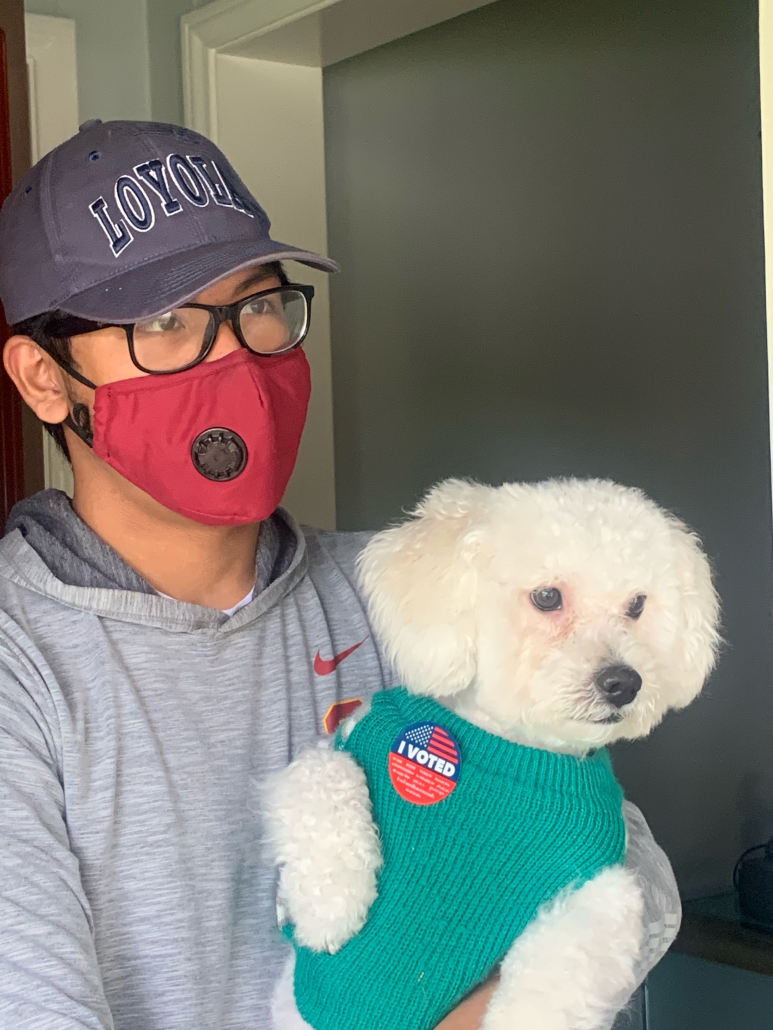Back in My Day: Bridging the gap between Grandpa and Grandpaw
While my straightforward personality can be broken down into three simple categories — my love for gerontology, my grief for my exes, my obsession with TWICE — I rarely talk about my interest in occupational therapy. Through classes for my occupational science minor, professors instill time and time again that I need to develop my own definition for occupations, so here’s my take: Occupations are activities that, whether we enjoy them or not, are critical to our daily function and social engagement.
In fact, I am learning more about my favorite occupation through a class on animal companions and communication — specifically, animal assisted therapy. Personally, I have a maltipoo named “Tobias ‘Toby’ Angelo” — a generic, small, crusty-eyed white dog owned by a middle-class Asian family. Toby certainly does not qualify as a therapy dog like some of his peers, but he still helps me get through my day as one of the few things I look forward to on my drive back home.
Toby is also pretty young — turning three on this column’s day of publication — despite officially relegating me back to the youngest in the family in human years. While I potty trained him and gave him the whole rundown of sitting and lying down to curate a facade of independence, I still give him showers, take him on walks and put him to bed every night. I also just talk with Toby, ask him how his day went, nap with him at home and rant about my road rage incidents on the way back from USC.
Yet, when I think of my pet owner responsibilities, my head’s broken gerontology record drives me to piece together the life of an older pet owner.
“But Lois,” you, the inquisitive reader, say. “Certainly, the benefits of having an animal companion, dog or not, would outweigh the inconveniences that may come with the caretaking and cleaning responsibilities of owning a pet.”
Simply put, it depends on a smorgasbord of variables — the animal’s housing, caretaker, breed and attitude, previous experiences with other pets or animal companions, etc. However, studies show that older adults will experience some form of physical health benefit in the presence of dogs, as they provide companionship for a population often plagued with social isolation and depressive attitudes.
But, let’s think of older adults who may not have the physical capacity or emotional wellbeing to care for a canine companion. Organizations such as Paws4Elders aim to provide older adults with human-animal bonds beyond usual fostering or adoption methods.
In a new sector named “robotherapy,” Paws4Elders has a new space dedicated to situations “when interactions with live pets are not possible” and where an “artificial animal can still yield health benefits and ease stress.” Pet partners include Tombot and Joy for All’s series of companion pets.
The innovation provides an interesting look into the future, especially with the rise of artificial companion animals. This discussion is nothing new either, with articles from as early as five years ago evaluating the pros and cons of these programmed pooches. It erases the hassle of clean-up duty, grooming and veterinary care while also ridding owners of the physical benefits that come with walking and the sense of spontaneity that accompanies real canine partners.
The technology has its merits and tradeoffs; however, studies show the long-term benefits vary when comparing real to robotic companions. In short, interventions utilizing technology as a framework for health and well being, while sustainable and less intensive, must invoke the same feelings and experiences as their real life counterparts.
Ultimately, the field of animal assisted therapies and interventions continues to develop with different groups reaping various benefits from their animal companions. While regulations and guidelines on service and therapy dogs’ education have yet to be nationally standardized, it’s without question that the benefits help promote a better quality of life.
For older adults, the pros, cons and alternatives to pets or animal-based interventions should be discussed upfront and center as part of the decision making process. A one size fits all approach negatively impacts all older adults, both those able to adequately care for their pet and those who may need a bit of assistance.
So, when I’m rocking back and forth on my front porch and call out to a Terminator version of Toby that looks like the Boston Dynamics robot dog, I’ll sit back and think, “Back in my day…”
Lois Angelo is a junior writing about the timeless lessons learned from older adults. He is also an associate managing editor of the Daily Trojan. His column, “Back in My Day,” usually runs every other Friday.


